When my friend gave me a cracked copy of Quake and Quake 2, he tossed it a mix CD that he thought made a better soundtrack to the games. The lead track was the Smashing Pumpkins cover of Alice Cooper’s “Clones” and so my indelible memory of Quake 2 is a blur of violence, demons, and explosions set to a guitar line that sounded like a siren and Billy Corgan’s alienated, lullaby delivery as he sang of society’s destruction at the hands of the disaffected masses.
Doom Eternal feels like a replica of that experience, crafted from memory but little actual reference to the classic id shooters themselves. From its music to its font selection, it is a game that attempts to recreate the look, sound, and feel of a 90s run-and-gun shooter without actually playing like one.
Videos by VICE
In this it’s a very different game from its 2016 predecessor, which we’ll call Doom 2016 for clarity’s sake here. Doom 2016 was self-consciously rejecting the modern narrative shooter and its form. All the trappings of the modern shooter were there: narration from off-screen characters, cutscenes, a backstory revealed in found-documents and archival material. But the game made a point of ignoring all of this in favor of getting to the next room where you slaughtered a bunch of monsters. Your space marine rejected every attempt by his off-screen quest dispensers to get him to comply with their orders and advance the story that was being told. It was a comic effect, but it was also how Doom 2016 established its identity. It acknowledged that it was familiar with modern shooter design… and then instead of mimicking it the way that Doom 3 did back in 2004, it pointedly devoted itself to pure combat ballet.
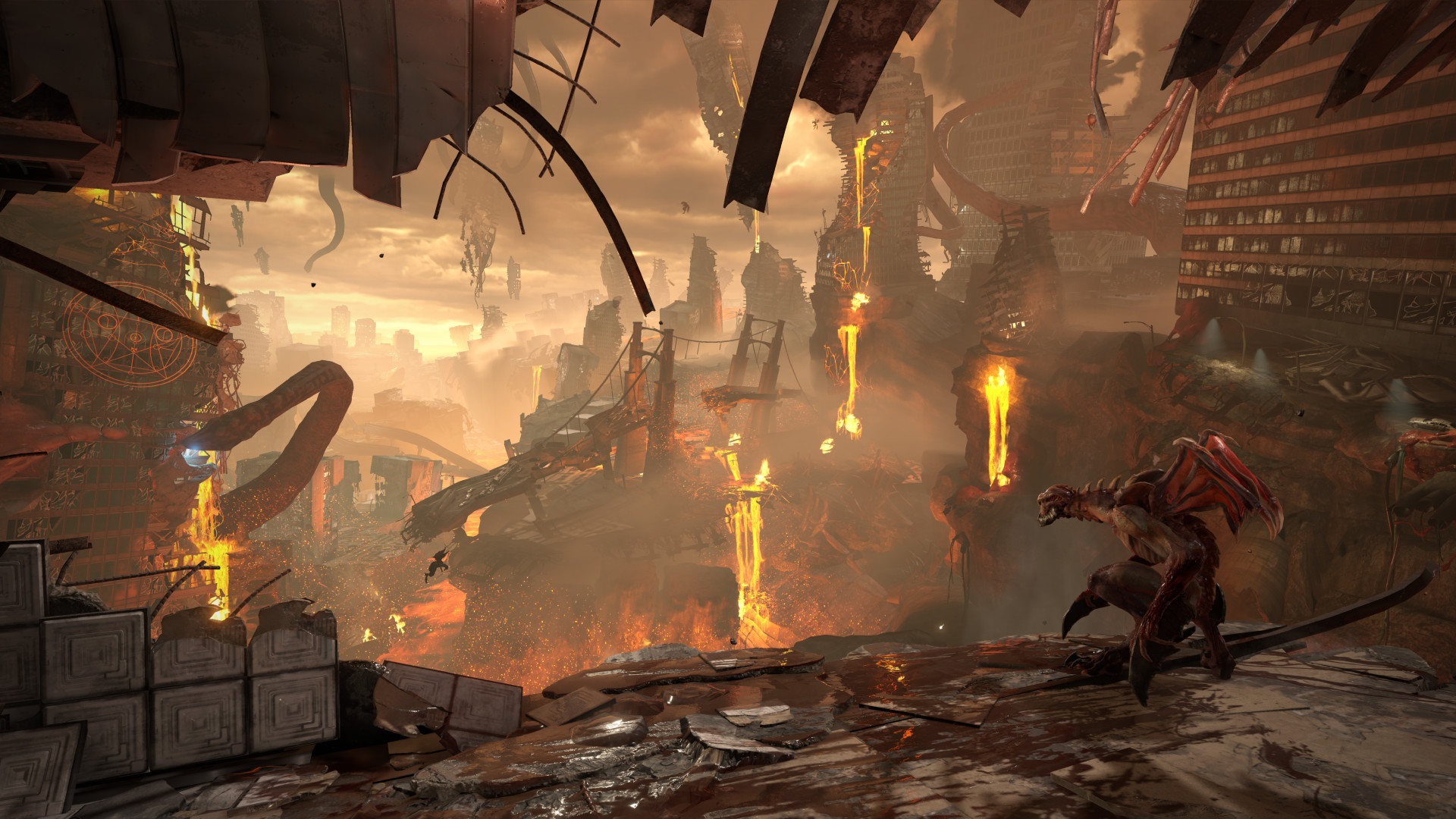
Doom Eternal is less interested in direct contradiction and more interested in nostalgia. Its (very good) metal soundtrack matches the action in cadence and intensity, but is also melodic and grimly triumphant in a way that a lot of later black metal consciously eschewed. In the world of Eternal, there is nothing in this world cooler than rocking out with guitars, and nothing in hell that’s badder than a dude with a shotgun and a chainsaw.
Eternal mixes up its tempo with a mix of sparse areas that require some jump-puzzle traversals, lightly-populated corridors full of manageable numbers of enemies who are mostly there to keep you warmed-up, and then deadly arenas packed with monsters of every stripe, jump pads, tantalizingly located pickup items, and no exit until you win or die.
This is where the nostalgia ends, by the way. Doom Eternal doesn’t actually play anything like the early id games it wants to evoke. Its pacing and focus on dancing through massive combat encounters recalls those old glory days of corridor shooters, but it’s much more a game of resource management and positioning than its predecessors. Playing it recalls Superhot and Dead Cells as much as it does Quake 2 or even Serious Sam. No matter how fast your reflexes or precise your aim, these combat arenas get too crowded with too many different enemy types to make pure, reactive flow a viable strategy. Instead, you’ll need to use all your tools to control the pace of the battle and replenish your resources.

In a lot ways this amounts to an expansion of what Doom 2016 offered with Glory Kills, where you could brutally dispatch stunned enemies for a health recharge and which crucially slowed down the action and gave you a brief window of invulnerability while the animation played. Eternal adds a lot to this system. The chainsaw now grants a massive boost to your ammo supply for every weapon, while a flamethrower causes enemies to drop shards of armor. Using these abilities efficiently by managing their cooldowns is critical as well as rewarding, turning every fight into an optimization puzzle as punishing as your average tactics game.
I had plenty of time to think about these trade-offs and tactics while the game reloaded after my many, many deaths, because Doom Eternal throws a lot at you from the very beginning. It’s not just that there are dangerous enemies, it’s that so many of them present completely different threat profiles. For instance, the Hell Knight isn’t a big problem on its own: it pretty much charges at you and does an easily-dodged area-of-effect jump-slam. But it became the bane of my existence early in the game because it was always on my heels if I paused to snipe the Arachnotron… but if I turned around and focused on the Hell Knight, there was a good chance that carefully spacing around its attacks would bring me into the path of the Arachnotron’s constant spam of giant, long-range plasma blasts. For the game’s toughest encounters, I basically had to learn the layout of the level and come up with a strategy for picking apart the tougher enemies while harvesting resources from the fodder-type enemies.
To help give you better odds of surviving these enormous scrums, Doom Eternal features multiple progression systems. You find weapon mods at a pretty regular clip, which will open-up alternate-fire modes for each weapon, but there are also Sentinel Crystals that give you perks on cooldowns and abilities, and Runes that you can equip to provide special bonuses. Your selection of runes can be changed at any time, which is akin to re-speccing your character to favor different tactics, which can be useful in getting past some particularly tough battles. You also earn “weapon points” which allow you to upgrade your weapons’ alternate-fire abilities. Then there are points for your suit, which offer yet more small buffs and bonuses.
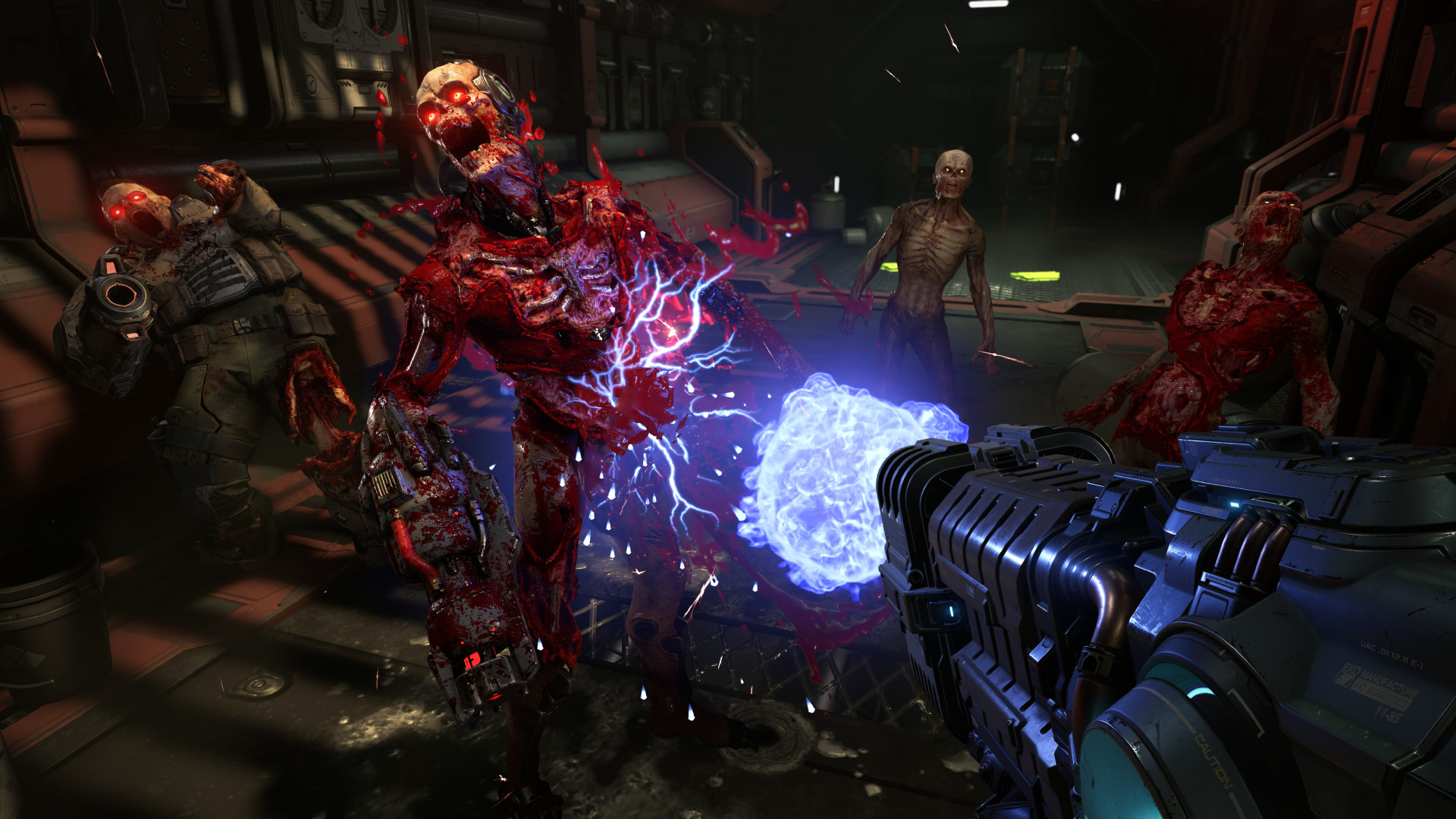
The other thing all these upgrades and options encourage is replay. Doom Eternal has a lot of the trappings of modern “live” games, like weekly goals and metagame progression systems and cosmetics. You’re encouraged to revisit levels on higher difficulties, with your late-game arsenal at your fingertips. There are also optional, semi-secret challenges hidden throughout the game, which send you into especially brutal and demanding versions of a typical combat encounter.
I do wonder about the actual appeal of that replayability, however. Doom 2016 caught me by surprise and its sendup of a conventional shooter in favor of an experience more precisely focused on combat was charming and unexpected. Doom Eternal is only as charming as you find smashing through hordes of demons. It looks nice but even levels meant to evoke the increasingly grandiose backstory of this edition of Doom left me cold.
I loved the battles, but I’d be hard pressed to tell you about any one of them, and there isn’t a lot of variation between them. The game increases in difficulty by adding more types of enemies into the mix, but they don’t really alter the balance you’re striking between harvesting resources from fodder and focusing-down tougher enemies. The battles with the Hell Knight and Arachnotron that mark the early game are functionally similar to later battles where enemies like Revenants, Pinkies, and Mancubi are tossed into the mix. The battles are harder because there are more things to juggle, but the novelty undeniably started to wear off despite the introduction of new adversaries and boss encounters.
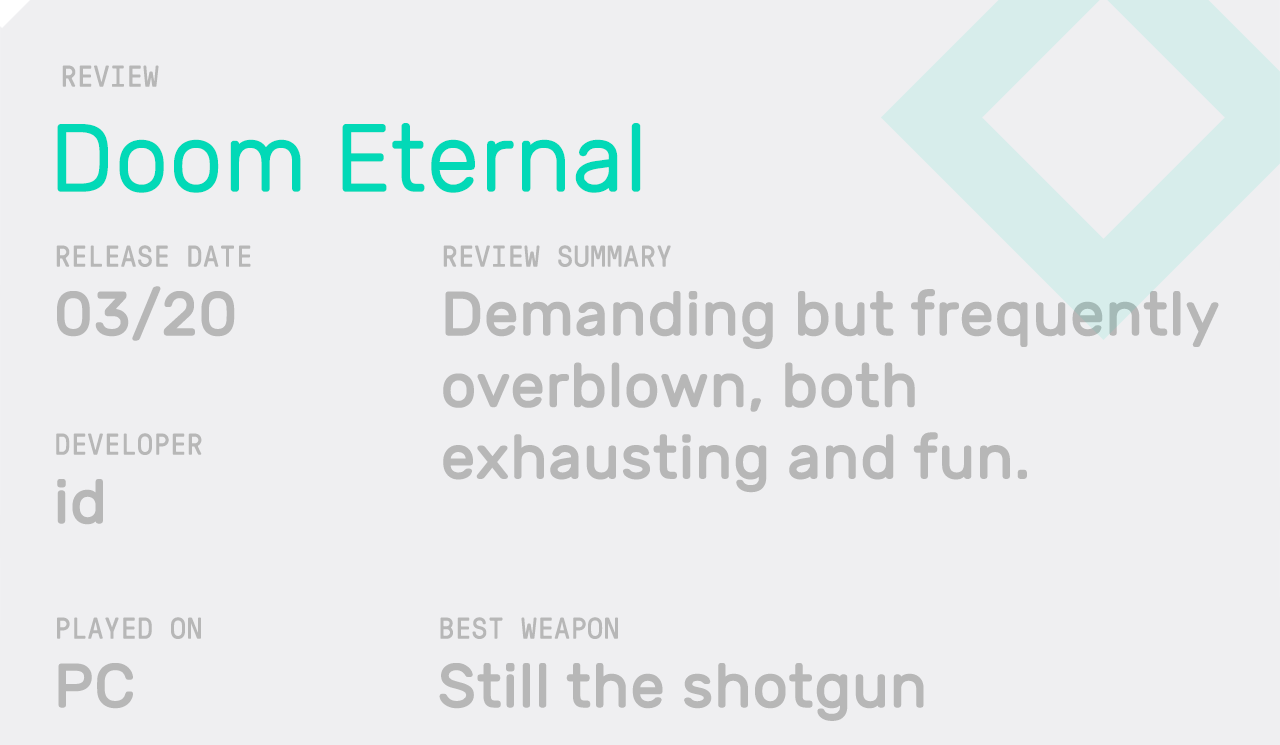
Part of the problem is that the locations aren’t memorable, and they don’t lend themselves to generating compelling moments that I am burning to revisit. The game’s various levels may employ different motifs, but by and large you’re going to see the usual Doom stuff: walls decorated with gore, high-tech industrial equipment, and satanic biker decor. When it comes time to fight, however, you’re probably still going to be in a big stadium-like space with high platforms, a few ramps, and a deep pit shot-through with tunnels.
If Doom 2016 argued that shooters had lost sight of the pure fun that lay at the heart of the classic id games, Doom Eternal ends up offering an argument for why they evolved toward narrative and cinematic set-pieces. The game’s singular focus on punishing fast-paced combat verges on monotony, and few enemies or encounters really succeed in breaking it up. To this dilemma of variety and motivation, Doom Eternal’s big new idea is progression systems and weekly goals. How quickly we become the thing we despise.
This is what keeps me from embracing Doom Eternal. It expands on the best parts of Doom 2016, and the flow of combat and the amount it demands of the player makes it a best-in-class single-player shooter in the heat of the moment. But the heat fades fast. And around those deep states of flow are a lot of unmemorable spaces, and much of the same cruft that bogs down a lot of other shooters. As progress bars fill-up and the game constantly reminds you that there are more secrets and challenges you can pursue, which are mostly just harder versions of the same battles you fight in the main campaign, this edition of Doom feels less eternal and more endless.
More
From VICE
-
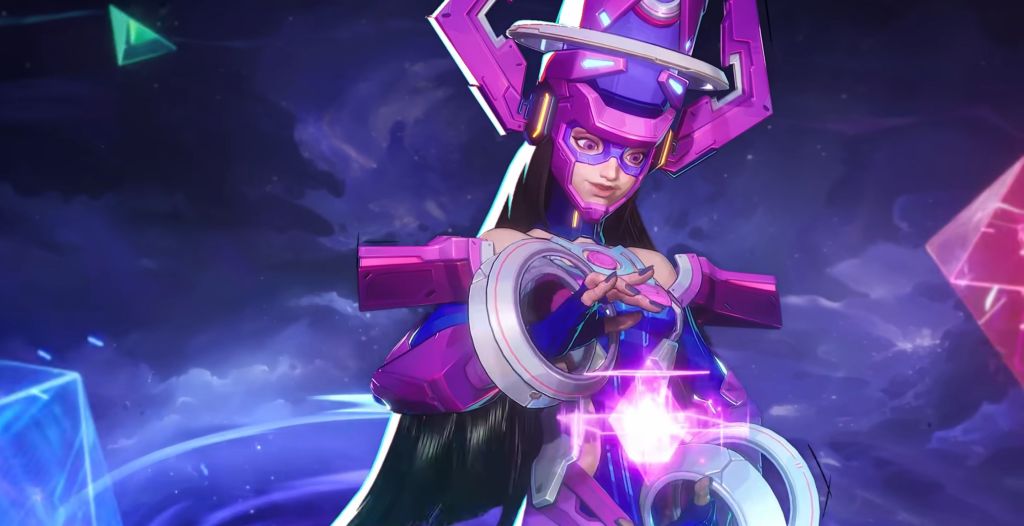
Screenshot: NetEase Games -

Screenshot: HBO -

Screenshot: Studio Trigger -
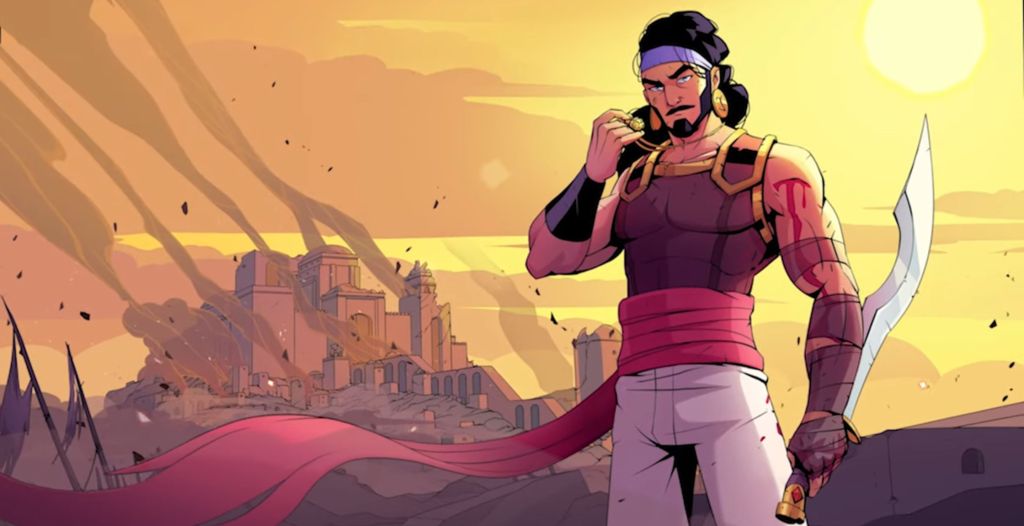
Screenshot: Ubisoft
